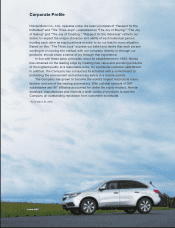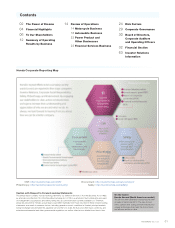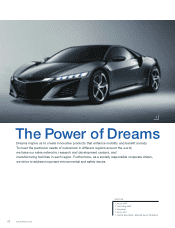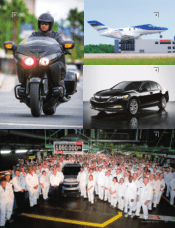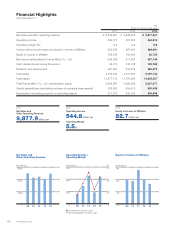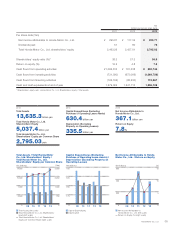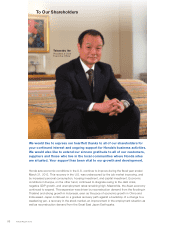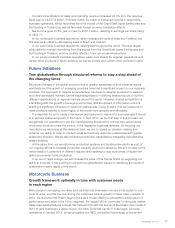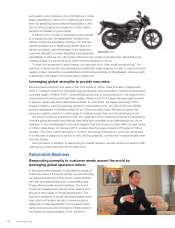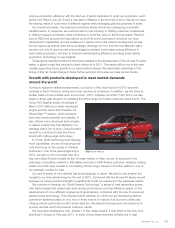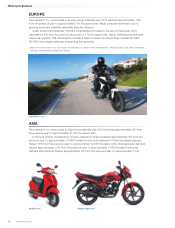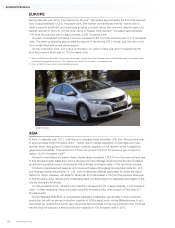Honda 2013 Annual Report Download - page 12
Download and view the complete annual report
Please find page 12 of the 2013 Honda annual report below. You can navigate through the pages in the report by either clicking on the pages listed below, or by using the keyword search tool below to find specific information within the annual report.
demand as well, in April 2013 we introduced the
Amaze sedan fitted with a new 1.5-liter diesel engine.
In addition to superior fuel economy, the Amaze is
price competitive due to local sourcing and produc-
tion. It promises to boost our ability to compete in
the Indian market.
At Honda, we will continue to introduce new
models that seek to fulfill the dreams of our customers
by creating automobiles designed to deliver fun and
pure driving enjoyment.
Power Product and Other Businesses
Responding efficiently to customer needs by integrating
production-related functions
Honda’s power products business is founded on the philosophy of applying technology to
deliver useful power to people in the form of a wide variety of lifestyle products based around a
core range of general-purpose engines. The first Honda power products were produced in
Japan, and our first factory dedicated to these products was built in the U.S. in 1984. We have
since established production facilities around the world in Thailand, India, China, France and
Australia. Cumulative global production surpassed 100 million units in 2011.
Our production bases worldwide for power products provide global production capacity as
well as R&D capabilities. As in the motorcycle and automobile operations, we are working to
integrate these production-related functions to realize increased development and production
efficiencies. Providing good products to customers around the world with speed, affordability
and low CO2 emissions will be a source of future growth for Honda. We aim to expand this
business by supplying products that fulfill the specific and unique needs of customers in
different regions of the world.
Building a sustainable society with R&D in the power
generation field
Heightened eco-consciousness is driving the demand for better energy solutions for the home.
Responding to these needs, Honda is advancing cogeneration unit technology, while focusing
on the development of the
Honda Smart Home System (HSHS)
, which comprehensively con-
trols household energy supply and demand. The
HSHS
reduces a household’s CO2 emissions
by using the gas-powered cogeneration unit to generate all the heat and electricity required by
the household, managing both the supply and consumption of power within the home. It also
connects homes interactively with electromotive mobility via power sharing and communication
links, while ensuring a backup power supply in an emergency. We agreed to participate in the
E-KIZUNA Project in 2011 in the city of Saitama. As part of this, we installed and began testing
the
HSHS
in demonstration houses in 2012. These houses will form part of a small community
to test Honda’s communication network for interactively managing and sharing energy in a
residential setting. Our goal is to commercialize
HSHS
and apply it in smart homes and in the
building of smart communities.
At Honda, our vision remains to supply people with products that deliver value and utility in
daily life, based on the technological expertise that we have cultivated over many years.
Amaze
(India)
Annual Report 201310


